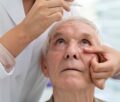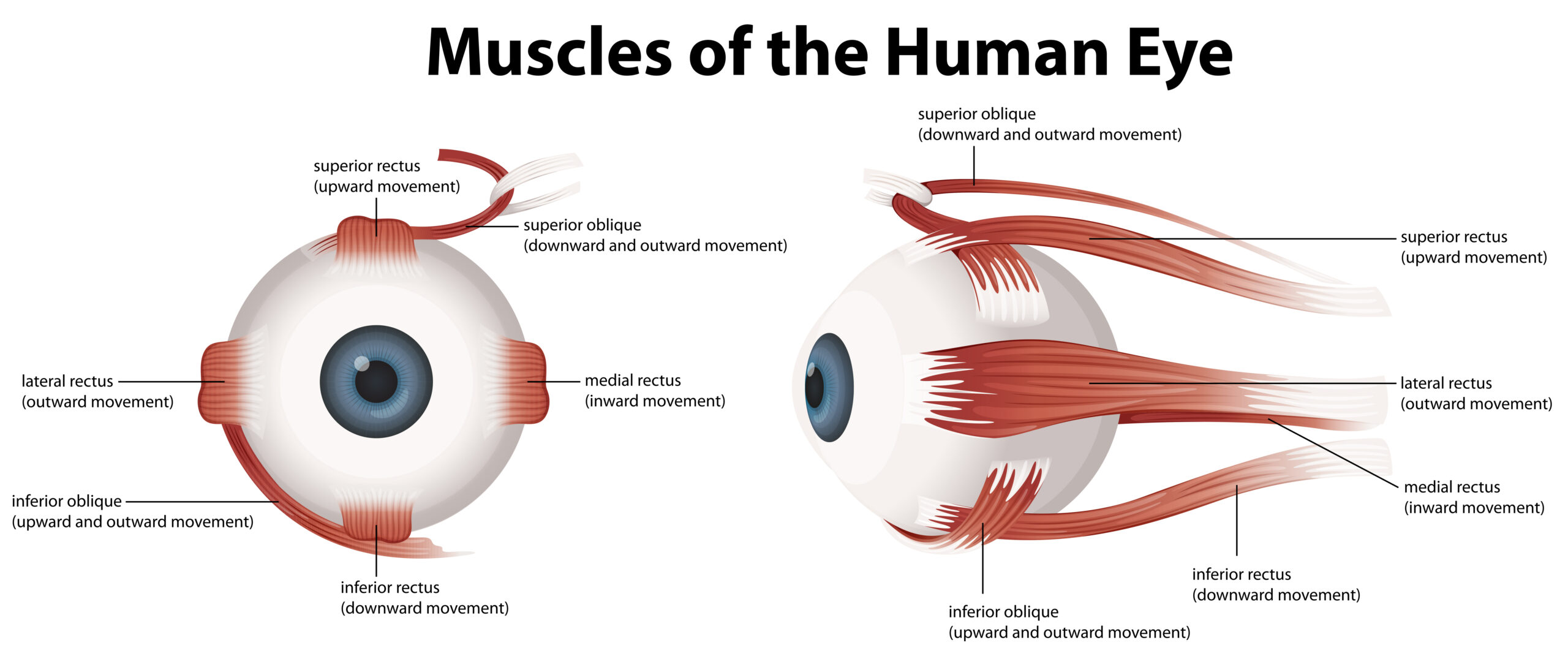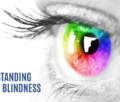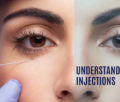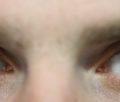Table of Contents
What is Chalazion?
A chalazion is a small cyst or lump that can develop on your eyelid.
This can be a result of a blockage in the meibomian glands that produce oil, which causes your eyelid to redden and swell. Eventually, a visible lump can develop.
Chalazions typically are not painful and often go away on their own within two to eight weeks, but if you have had one for several months or it is starting to interfere with your vision, your eye surgeon may recommend surgical removal.
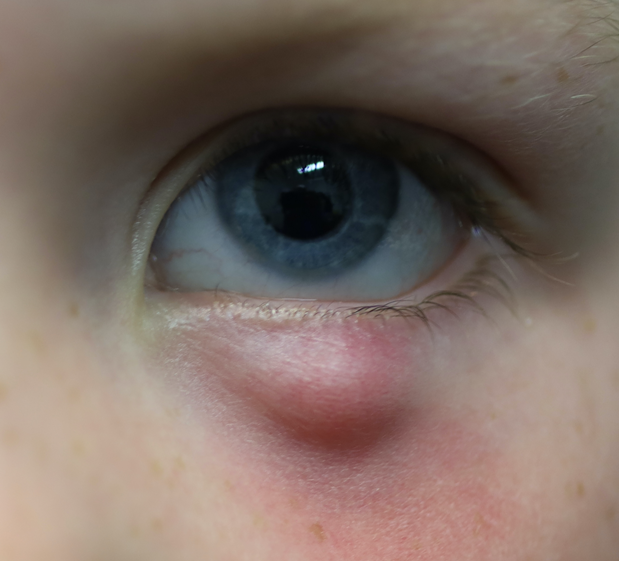
What are the causes of Chalazion?
A chalazion is a small, non-infectious lump or cyst that typically forms within the eyelid. It develops when there is a blockage in one of the small oil glands (meibomian glands) located in the eyelid. The specific causes of chalazion include:
1) Rosacea: A skin condition that causes redness and visible blood vessels, often on the face, leading to a flushed or blush-like appearance).
2) Chronic blepharitis: A long-term inflammation of the eyelids, causing irritation and redness).
3) Seborrheic Dermatitis: A skin condition that leads to red, itchy, and flaky skin, commonly affecting areas with more oil glands, such as the scalp and face.
4) Tuberculosis
5) Bacterial Infection
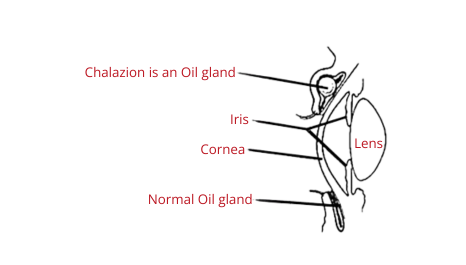
What are the symptoms of a Chalazion?
1) A small, painless lump or bump on the eyelid.
2) The affected eyelid may become swollen and red.
3) Increased tearing or watering of the eyes.
4) Blurred vision, if the chalazion is large enough or pressing against the eye, it may cause some blurriness in vision.
How is a chalazion diagnosed?
A chalazion is typically diagnosed through a physical examination by a healthcare professional, such as an ophthalmologist or optometrist. The diagnosis is usually based on the following:
1) Medical History: The doctor will inquire about your symptoms, including when they started, their progression, and any associated discomfort or pain.
2) Physical Examination: The healthcare provider will examine your eyelids and eyes. They may use a magnifying instrument called a slit lamp to get a closer look at the affected area.
3) Visual Inspection: Chalazia are often visible as a painless lump or swelling on the eyelid. The doctor will check the size, location, and appearance of the bump.
In some cases, additional tests or diagnostic procedures may be performed to rule out other eye conditions. However, chalazia are usually straightforward to diagnose based on a physical examination.
Can a chalazion be prevented?
While it may not be possible to completely prevent chalazion, there are some measures you can take to reduce the risk of developing them or to minimise their occurrence:
1) Eyelid hygiene.
2) Avoid touching your eyes.
3) Remove makeup.
4) Stay hydrated.
5) Regular eye check-ups.
6) For contact lens wear, ensure clean hands and follow professional lens care instructions.
When should I see an eye doctor?
In many cases, chalazia can resolve on their own without the need for surgery. However, if the chalazion is causing persistent symptoms or is large and doesn’t respond to conservative treatments, surgery may be considered.
You should consult with an eye care professional, such as an ophthalmologist, who can evaluate your specific situation. They can provide guidance on whether surgery is necessary based on factors such as the size of the chalazion, its location, and the impact on your vision or comfort. Conservative treatments may include warm compresses, eyelid massages, and antibiotic ointments.
Chalazion Surgery
Chalazion surgery involves anesthesia, which can be local or general. Local anesthesia only numbs the eyelid, while general anesthesia puts you to sleep for the entire procedure. Before surgery, it is important to tell your eye doctor or anesthesiologist about any medications you are taking, including over-the-counter (OTC) medications, prescription medications, vitamins and supplements, and herbal remedies.
It’s important to keep in mind that anesthesia can have a number of side effects, including nausea, vomiting, and drowsiness. If you experience any of these side effects, be sure to tell your eye doctor.
How is the surgery done?
An ophthalmologist may perform surgery, known as a chalazion incision & curettage, to drain the chalazion. After anaesthesia, a specialised clamp is inserted to hold the eyelid open and a small incision is made on the under-surface of the eyelid. The eye surgeon will careful remove the cyst’s contents. Stitches are generally not needed.
The surgery usually takes approximately 10 minutes, but the full process, including preparation and anesthesia, may take around 45 minutes.
You will be given additional information about how to prepare, including whether you can eat or drink before surgery, from your ophthalmologist.
Is there any aftercare involved?
After surgery, you’ll likely be prescribed an antibiotic ointment and simple oral analgesia such as paracetamol.
Make sure to take any prescribed medications. If you are having surgery, be sure to drink plenty of fluids and eat a light, bland diet for a few days afterwards. This will help prevent any swelling and ensure a speedy recovery.
You may also be given eye pads or shield to protect your eyes.
After an eye surgery, you may experience some swelling, bruising, and leakage of a reddish fluid. This is normal and will go away in a few days.
You can use a cold compress on your eye a few hours after your surgery to reduce swelling.
Following surgery, you’ll want to avoid:
● rubbing or touching your eyes
● wearing contact lenses for a week
● getting water in your eyes when showering
● swimming
How long does recovery take?
The surgical incision should heal in about 7 to 10 days.
It is a good idea to avoid any activities that could potentially injure your eye for at least two weeks.
Are there any potential risks?
Chalazion surgery is a low-risk procedure, but it does still carry a few risks.
Potential risks include:
● bruising
● bleeding
● infection
● recurrence
As you recover, call your surgeon if you experience any of the following:
● redness and swelling that is getting worse
● green or thick discharge (some light, bloody discharge is normal)
● increased pain or pain that doesn’t improve with simple medications
● blurred vision
● fever higher than (38°C)
The bottom line
If your chalazion doesn’t go away on its own, your ophthalmologist may recommend surgical removal. This is a relatively quick and safe procedure.
Make sure to follow your surgeon’s aftercare instructions to improve your chances of a straightforward and speedy recovery.
FAQs
1) Are stye and chalazion the same?
2) How to get rid of chalazion at home?
3) Can I shower after chalazion surgery?
4) Can you drive after chalazion surgery?
5) Does chalazion surgery leave a scar?
6) What medication is used for chalazion?
7) Can a chalazion come back after surgery?
8) Can a chalazion appear on both eyelids?
Author Bio
Dr. Parth Shah is a leading ophthalmologist in Canberra, specialising in cataract surgery. With extensive training and experience, he’s renowned for his expertise in the field. Dr. Shah is dedicated not only to performing successful surgeries but also to patient education. His compassionate approach, combined with technical proficiency, has earned him the trust and gratitude of countless patients. He’s a true advocate for eye health and a trusted name in the Canberra ophthalmology community.

